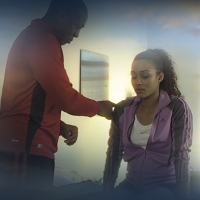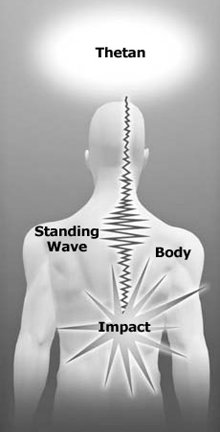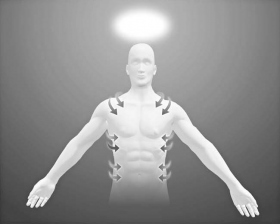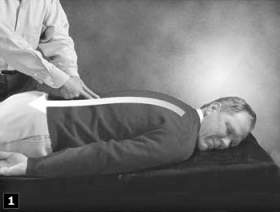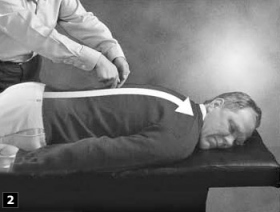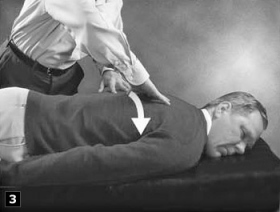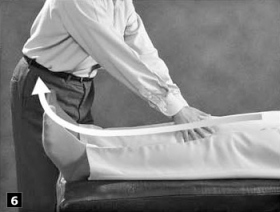Among the many types of assists in Scientology is one which can straighten joints and the spine.
This is called a Nerve Assist.
In our theory, it is nerves that hold the muscles tense, which then hold the spine out of place.
There are twelve big nerves which run down a person’s spine, spreading out from the spine across both sides of the shoulders and back. These twelve nerves branch out into smaller nerve channels and nerve endings. Nerves affect the muscles and can, if continually tensed, pull the spine and other parts of the body structure out of place.
Nerves carry the shock of impacts. Such a shock should dissipate, but it seldom does entirely. Nerves give orders to muscles. With an impact, a surge of energy starts down the nerve channels. Then, from the small ends of the nerve channels, the energy surge reverses and the result is a bulge of energy which stops midway along the channel. This gives what is called a “standing wave.” It is just standing there, not going anywhere.
The Nerve Assist consists of gently releasing the standing waves in the nerve channels of the body, improving communication with the body and bringing the being relief.
Procedure
1. Have the person lie face down on a bed or cot. Then, with your two index fingers, stroke down close to the spine on either side, fairly rapidly but not very forcefully. This action is then repeated twice.
2. Then reverse your original action, following the same channels with your two fingers back up the spine. This is done three times.
3. Now, with your fingers spread fan-like, stroke the nerve channels, using both hands at the same time. Stroke away from the spine and to the sides of the body following the nerve channels as represented in the top left illustration below. Once you have covered the whole back in this way (working down from the top of the spine to the bottom of the spine), repeat this step two more times.
4. Now reverse the direction of your strokes so they go back up to the spine.
5. Now have the person turn over so he is lying face up. Using both hands, continue to parallel the nerve channels around to the front of the body.
(Note: In following the nerve channels around to the front of the body, stroke only as far as the points of the arrows in the top right illustration below. The nerve channels being handled do not extend across the chest or abdomen, so stroking is not done across those areas.)
6. Then reverse your direction on those same nerve channels.
(Note: In following the nerve channels in step 6, begin stroking at the spots indicated by the points of the arrows in the top right illustration below, stroking towards the back.)
7. Now stroke down the arms and legs.
The person is again turned face down, lying on his stomach, and you start over at step 1.
This procedure is continued until the person has a cognition or expresses some relief, and has very good indicators. He may also experience a bone going into place, often accompanied by a dull popping sound. At this point the Nerve Assist should be ended off for that
The Nerve Assist should be repeated daily until all the standing waves are released.
a system of healing based upon the theory that disease results from a lack of normal nerve function and employing treatment by manipulation and specific adjustment of body structures (as the spinal column) and utilizing physical therapy when necessary in order to restore proper alignment.
the period of time during which processing occurs. See also processing in this glossary.
